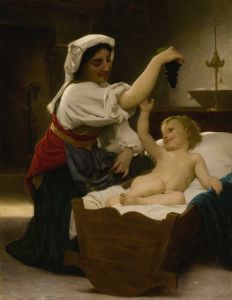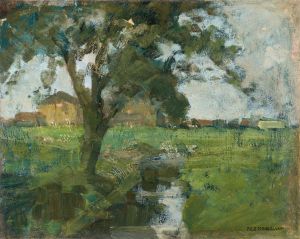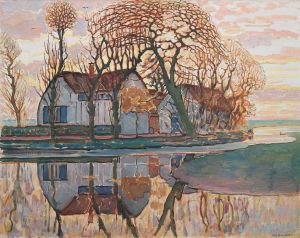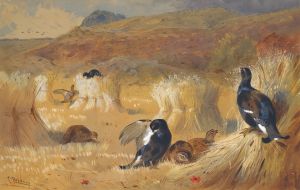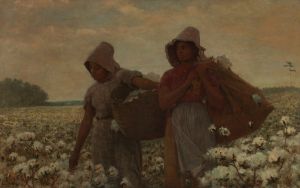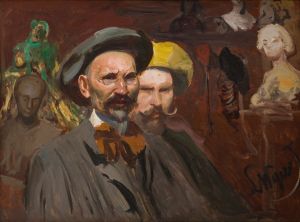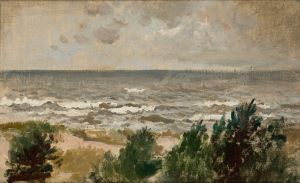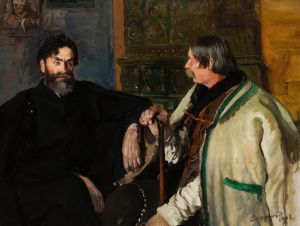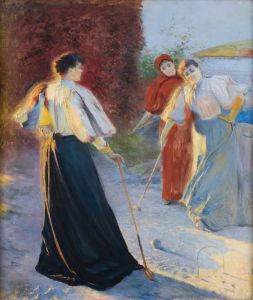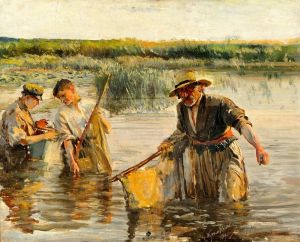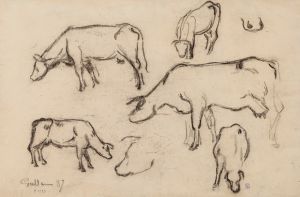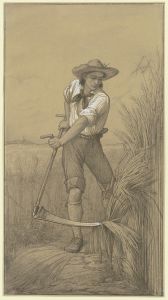
Sheaves
A hand-painted replica of Leon Wyczółkowski’s masterpiece Sheaves, meticulously crafted by professional artists to capture the true essence of the original. Each piece is created with museum-quality canvas and rare mineral pigments, carefully painted by experienced artists with delicate brushstrokes and rich, layered colors to perfectly recreate the texture of the original artwork. Unlike machine-printed reproductions, this hand-painted version brings the painting to life, infused with the artist’s emotions and skill in every stroke. Whether for personal collection or home decoration, it instantly elevates the artistic atmosphere of any space.
Leon Wyczółkowski was a prominent Polish painter associated with the Young Poland movement, known for his diverse range of artistic styles and subjects. One of his notable works is "Sheaves," a painting that exemplifies his skill in capturing rural landscapes and agricultural themes, which were common in his oeuvre.
"Sheaves" is a depiction of harvested grain bundled into sheaves, a traditional method of gathering crops. This painting reflects Wyczółkowski's interest in rural life and the natural environment, themes that were prevalent in his work during the late 19th and early 20th centuries. The painting is characterized by its attention to detail and the use of light and shadow to create a realistic portrayal of the scene. Wyczółkowski's technique often involved a careful study of his subjects, and "Sheaves" is no exception, showcasing his ability to render the textures and forms of the sheaves with precision.
Wyczółkowski was known for his versatility, working in various media including oil, watercolor, and pastel. His style evolved throughout his career, influenced by Impressionism and Realism, which can be seen in the way he approached the depiction of light and atmosphere in "Sheaves." The painting likely reflects his interest in capturing the transient effects of light, a hallmark of Impressionist influence, while maintaining a commitment to realistic representation.
The context of Wyczółkowski's work is important to understanding "Sheaves." During the time he was active, Poland was under partitions by Russia, Prussia, and Austria, and many Polish artists sought to preserve and celebrate Polish culture and identity through their work. By focusing on rural themes and traditional practices, Wyczółkowski contributed to this cultural movement, emphasizing the beauty and significance of Polish rural life.
"Sheaves" is part of Wyczółkowski's broader body of work that often depicted scenes from the Polish countryside, including landscapes, peasant life, and agricultural activities. These works not only highlight his technical skill but also his deep connection to the Polish land and its people. Wyczółkowski's paintings are celebrated for their ability to convey a sense of place and time, capturing the essence of the Polish landscape and its cultural heritage.
Throughout his career, Wyczółkowski received recognition for his contributions to Polish art. He was a member of various art societies and his works were exhibited widely, both in Poland and internationally. His legacy is preserved in numerous Polish museums, where "Sheaves" and other works continue to be appreciated by audiences today.
In summary, "Sheaves" by Leon Wyczółkowski is a significant work that reflects the artist's dedication to depicting rural Polish life with realism and sensitivity. Through his masterful use of light and texture, Wyczółkowski captures the essence of the agricultural landscape, contributing to the preservation of Polish cultural identity during a time of political upheaval. His work remains an important part of Poland's artistic heritage, celebrated for its beauty and historical significance.





